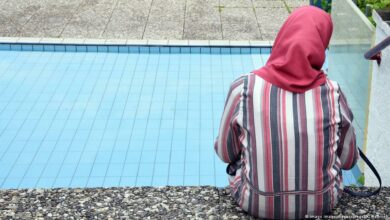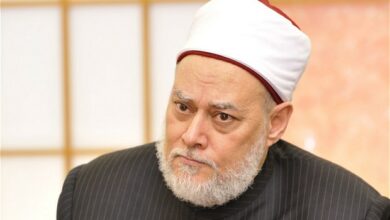
In the face of strong competition from China, the traditional, locally produced Palestinian headscarf has put up a show of resistance, successfully pulling itself back from the brink of extinction.
Thanks to the business sense of two brothers from the southern West Bank city of Hebron, the traditional black-and-white keffiyeh headscarf has discovered a new lease of life.
In 1961, their father Yasser Hirbawi, who sold keffiyehs he brought from Syria and Jordan, decided to set up his own production line.
When the factory began, two employees managed two looms to produce the famous black-and-white patterned headscarf.
Today, his sons are at the head of a business which employs 15 people and exports keffiyehs worldwide, all of them bearing the logo: Made in Palestine.
Each year, they sell around 30,000 scarves, of which two or three percent are sold locally while the rest go overseas with the main markets in Italy, France and Germany, most of which are ordered online, according to Juda Hirbawi.
Paradoxically, it was the British who turned the keffiyeh into a widespread symbol of resistance during the time of Palestine under their mandate (1920-1948), says Abdelaziz al-Karaki, 61, who has spent more than four decades working in the Hirbawi factory.
"They said that anyone who wore the Bedouin scarf was an opponent and suddenly everyone started wearing them," he said.
But the keffiyeh's appearance on the international scene can be put down to the influence of one man: Yasser Arafat, the late Palestinian leader and icon of the resistance who was hardly ever pictured without his trademark headscarf.
– Modelled by Arafat –
Thanks to him, the headscarf was pictured at the United Nations, on the White House lawn and in Oslo when Arafat was jointly awarded the Nobel Peace Prize along with Israel's Shimon Peres and the late Yitzhak Rabin for their Middle East peace efforts.
And it is a portrait of the late leader in his keffiyeh which greets visitors at the entrance to Hirbawi's factory.
"Arafat used to offer a keffiyeh to all his distinguished visitors and today, keffiyehs from our factory are still offered by his successor Mahmud Abbas," said Juda, speaking over the roar of the looms, which are now automated.
His factory has made a big comeback.
At the start of the last decade, in the face of strong competition from China and India who were selling keffiyehs at a third of the price, he decided to shut down the factory.
"They literally flooded the market. With their prices, we just couldn't compete," he told AFP.
It was a tough decision for a family whose production line had lived through decades of conflict and the first Palestinian uprising (1987-1993) and had survived the rigours of daily life in the Israeli-occupied territories.
Although the factory was closed for five years, it gave them time to come up with a new strategy.
– All hues and colours –
"We could never beat them on price, so we decided to focus all our efforts on quality," said Juda, who has to import all his raw materials for lack of local alternatives, from thread to the automatic looms.
As well as quality, they have had to adapt the keffiyeh to international demands.
"Foreigners want different colours so we have had to revisit the traditional style," he said.
Hard at work, the looms are fitted with not only the traditional black and white thread but also red for the Jordanian version.
From turquoise and petrol blue, to pearl grey and lemon yellow, these days the keffiyeh comes in all hues and shades.
And it's not only used as a scarf. It can be worn as a tunic, reworked as a shoulder bag or transformed into pockets.
This eye-catching fabric with its chequered effect has spread far and wide.
Whether it is dancers on TV, US rap artists filming a video, or Palestinians competing in the Arab Idol talent show, they are all wearing the scarf.
This revival of sorts has drawn some measure of scepticism among those who have never stopped wearing it.
"It is the symbol of Palestine," said Abu Fahmi al-Kisswani, a Palestinian from annexed east Jerusalem.
"For some people it's perhaps just a fashion accessory," said Maria, a woman from Uruguay who had just purchased a scarf in Jerusalem's Old City.
For her, the keffiyeh means more than that: it is a way of "showing solidarity with the Palestinians".
Down a neighbouring alleyway, Yussef Sinjlawi has just sold three keffiyehs. Tourists, he said, are keen to take them home as a memento.
"Some tourists don't want to pay too much, so we offer them keffiyehs for 25-30 shekels ($7.50/7 euros)" which are Chinese- or Indian-made, whereas a "good quality keffiyeh costs 70-80 shekels ($20/19 euros)," explained Bassem Barakat who has worked as a shopkeeper in the Old City for three decades.
"It's up to them to chose."
He himself has already made his choice.
"Like all Palestinians, I have my keffiyeh — and it comes from Hebron."




